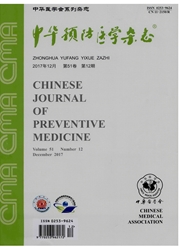

 中文摘要:
中文摘要:
帕金森病(PD)是仅次于老年痴呆症的第二大最常见的神经退行性疾病。近年来,其发病率有逐年上升的趋势。PD的病因尚不清楚,可能与年龄老化、遗传和环境等综合因素有关,其中环境化合物的影响近来备受关注。来自流行病学、动物实验和细胞培养的研究表明,许多环境化合物参与了线粒体功能障碍、氧化应激、小胶质细胞活化、α-突触核蛋白(α-Syn)异常聚集以及自噬受损等发病机制,从而增加了PD的发生风险。
 英文摘要:
英文摘要:
Parkinson's disease (PD) was the second most common neurodegenerative disorder after Alzheimer's disease. Incidence of PD was ascending year by year. The etiology of PD is poorly understood, involving aging, genetic and environmental factors. Recently, environmental compound had attracted more and more research interest. Studies and extrapolation from epidemiology, animal experiments and cell culture suggested that environmental compound had involved in the molecular mechanisms including mitochondrial dysfunction, oxidative stress, microglia activation,abnormal aggregation of α-synuclein and autophagy damage,which seemed to increase PD risk.
 同期刊论文项目
同期刊论文项目
 同项目期刊论文
同项目期刊论文
 期刊信息
期刊信息
